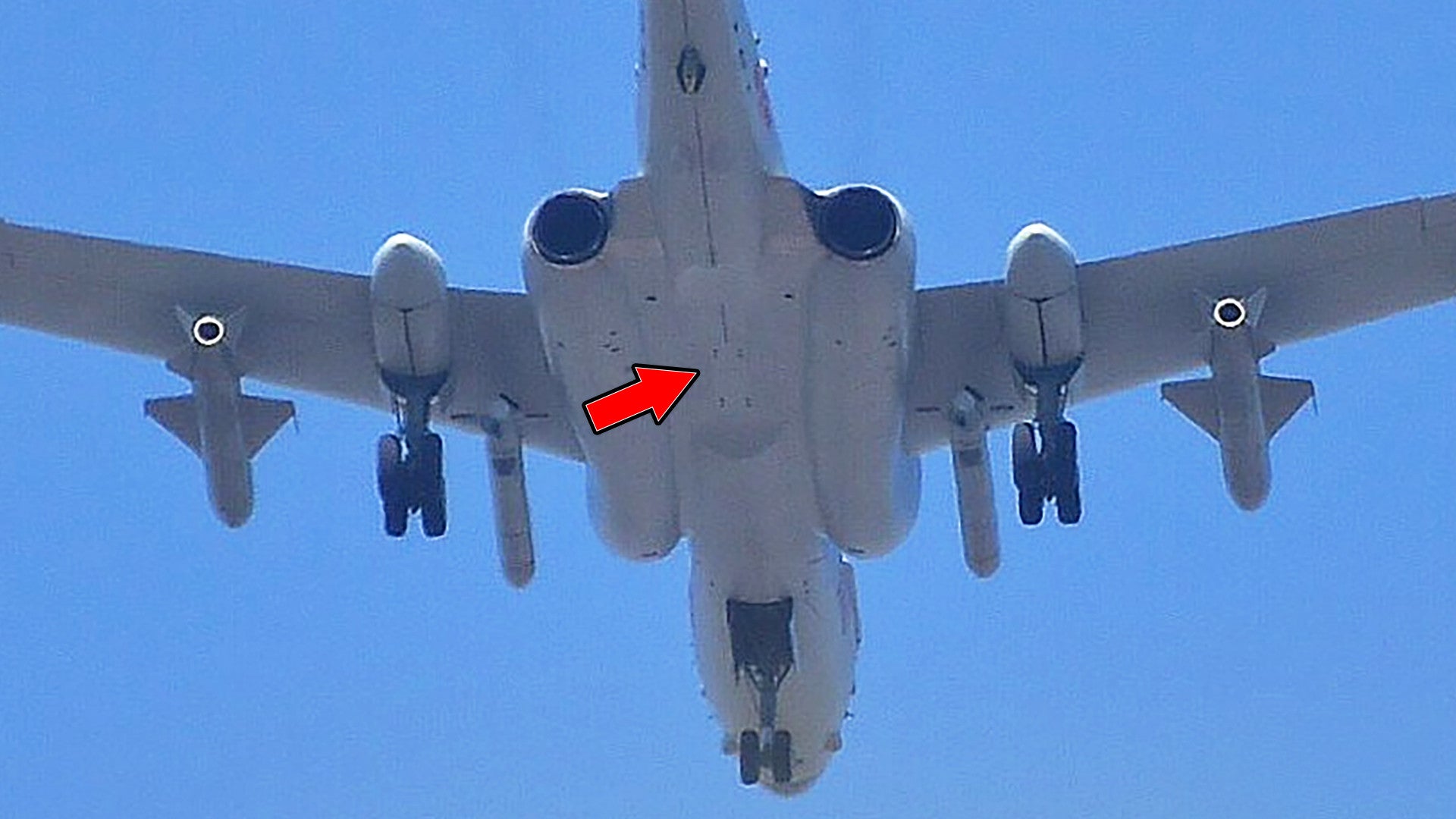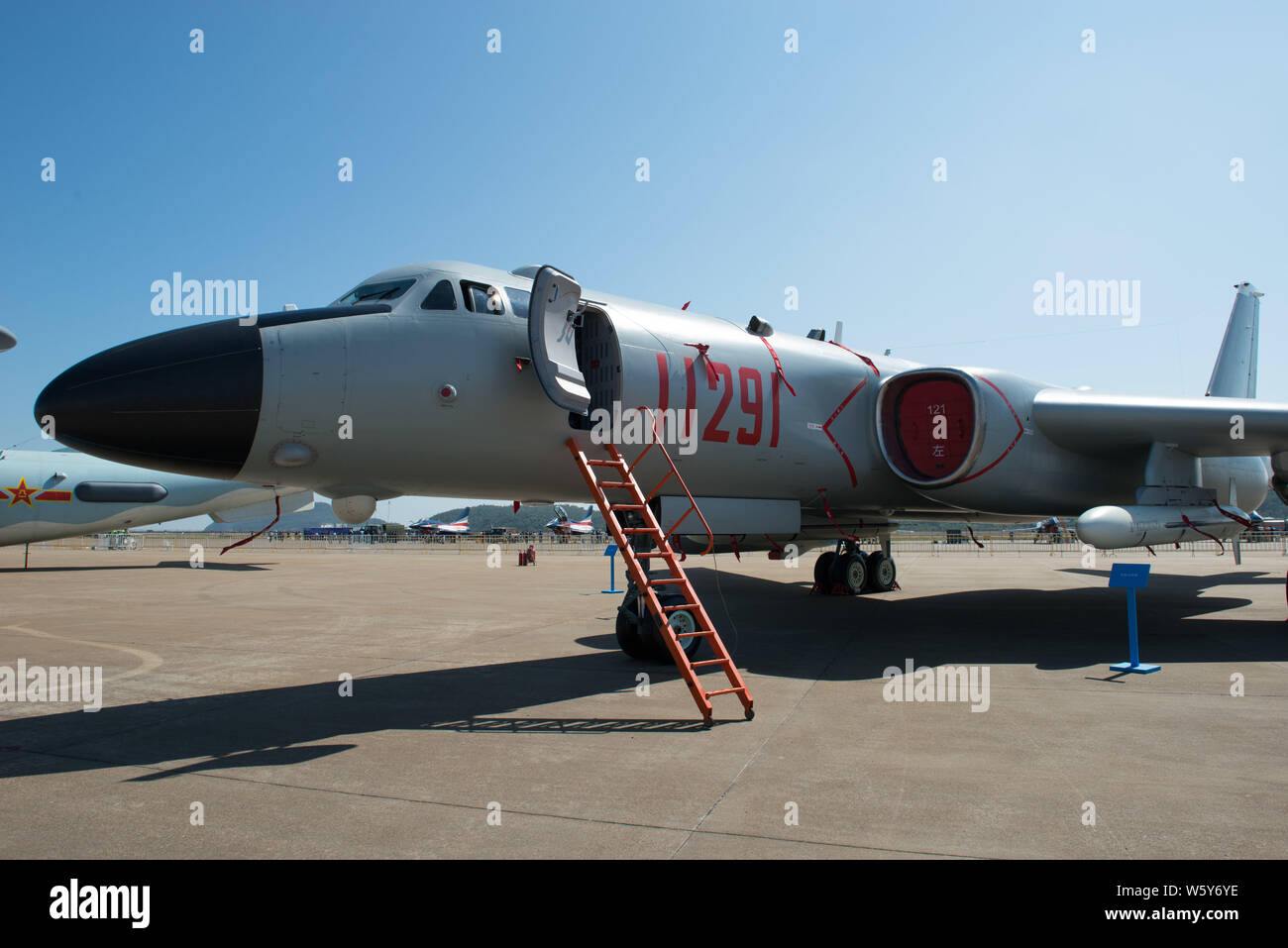Xian H 6 - Beijing's years of patient investment in the Xian H-6 bomber, an indigenous Cold War-era variant of the Tupolev Tu-16, have created an attack vehicle of considerable concern to Washington DC.
H-6K at the 2018 China Airshow in Zhuhai. The K, J and N models have improved engines and other major improvements
Xian H 6

The H-6 family has 33 mentions in the 173-page report. China's new stealth fighter, the Chengdu J-20, is far back in second place with only 11 mentions. What is arguably Beijing's most capable fighter, the Sukhoi Su-35, has only two references. The report devotes only a few short lines to China's planned stealth bomber, saying it won't be ready until the mid-2020s.
Chinese Bomber Flights Around Taiwan: For What Purpose?
American concerns about the H-6 are justified. Although ultimately based on the aging Soviet Tu-16 that was withdrawn from Russian service in the early 1990s, the H-6 will be the mainstay of China's bomber force until 2030. Even with the arrival of a new stealth bomber, tentatively designated the H-20, the venerable H-6 will remain the base platform.
The H-6 has gone through a complex series of iterations and upgrades since entering Chinese service in the 1960s. New variants such as the H-6K and H-6N operated by the People's Liberation Army Air Force (PLAAF) and the H-6J operated by the People's Liberation Army Air Force (PLANAF) are much more capable aircraft than the old ones. Vi-16. They also mark a major improvement over the previous generation of H-6 platforms such as the G, H and M. Another updated variant, the HD-6, is considered a dedicated electronic warfare aircraft.
In addition to the heavy long-range weapon load, the K, J and N variants are powered by two Solovyov D-30 turbofans, which are much more efficient than the WP-8 turbojets that powered the earlier H-6. It is also speculated that this type was fitted with the locally developed WS-18 turbofan engine that would eventually power the Xian Y-20 strategic transport.
With much larger engine intakes to accommodate the upgraded engine, the K, J and N variants ditch the original glass section of the Tu-16 and H-6, replacing it with a solid housing for an electronically scanned passive array or possibly an electronically scanned active radar. It also has an electro-optical/infrared turret under the fuselage. The tail gunner station found in previous iterations gives way to a fully enclosed tail.
Video Reveals Chinese H 6n Bomber Carrying Suspected Hypersonic Weapon
"In October 2019, China signaled the return of the air segment of its nuclear triad, after the PLAAF publicly unveiled the H-6N as its first nuclear refueling air-to-air bomber," according to a US Department of Defense report.
The nuclear triad is considered the cornerstone of nuclear deterrence. Consisting of land-based intercontinental ballistic missiles, submarine-launched ballistic missiles, and long-range nuclear bombers, the triad is seen as the guarantor of a sustainable second-strike capability.
In addition to the refueling probe, the H-6N has a special recess under the fuselage. The Pentagon says this can be used to carry an anti-ship ballistic missile (ASBM) or an unmanned aerial vehicle.

“The H-6N can carry China's new DF-21D ASBM-derived ballistic missile (ALBM), meaning it could launch such a weapon from China's anti-access and area denial (A2/AD) framework against a US carrier. battle groups 809 nm (1,500 km) away and well beyond the range of carrier-based air cover such as the [Lockheed Martin] F-35C,” says Malcolm Davis, senior analyst, defense strategy and capabilities at the Australian Strategic Policy Institute.
El Bombardero H 6 Evoluciona De Reliquia De La Guerra Fría A Martillo De Beijing
Another weapon that sees the H-6 carry is the short-range CM-401 ALBM. The "skip-glide" trajectory of these weapons makes it particularly difficult to intercept ballistic missile defense systems.
PLANAF H-6J bombers have three missile racks on each wing, as well as a pair of electronic warfare modules on the fourth station
While the H-6N is still new, with only a limited number in service - Beijing is very secretive about the number of aircraft - the H-6K and H-6J are poised to provide the backbone of China's strike force in the Pacific, supporting Beijing's still strong force. legacy H-6 platforms such as G, H and M.
The Pentagon notes that the PLAAF's H-6K, with three thrusters under each wing, is capable of attacking the key US Pacific base of Guam. The PLANAF version of the H-6K, the H-6J, also has three struts under each wing, giving it a payload of six YJ-12 supersonic anti-ship cruise missiles. This allows it to attack ships as far as the "Second Island Chain," which stretches from Japan through Guam to the South Pacific, in support of the older H-6G, which can carry four YJ-12s.
Xian H 6n
Strategic locations such as Taiwan, which Beijing claims is a breakaway province, plus Japan's Okinawa, South Korea and Southeast Asian countries are all within easy range of H-6 forces. The H-6Ks also practiced landings on military bases that China has developed from atolls in the South China Sea.
An interactive map released by the Asia Maritime Transparency Initiative shows that H-6 bombers operating from atolls in the South China Sea enjoy a combat radius that spans all of Southeast Asia, including the world's most important maritime choke point, the Strait of Malacca. .
In the event of war, if the Chinese Communist Party makes a major decision to attack US and allied bases in the region, H-6 cruise missile strikes would be closely coordinated with short- and medium-range ballistic missile strikes. , of which Beijing owns a large number. The simultaneous arrival of waves of cruise and ballistic missiles from the air would be calibrated to overwhelm the air base's defenses. The Pentagon report also warns that H-6Js are conducting saturation attacks on US aircraft carriers.

, the authoritative guide to continental air forces. He estimates that China is likely to be fielding just under 100 H-6Ks, which represents about half of China's total bomber force - the remainder mostly comprising older H-6Hs and H-6Ms. He believes production of the H-6K would stop, with the PLAAF's H-6N and the PLANAF's H-6J now being produced in parallel.
Pla Navy Air Force Bombers Carry Out South China Sea Exercise
But while the evolution of the H-6 highlights China's ability to innovate and add capabilities to an aging platform, the platform has clear weaknesses. Unlike US Air Force bombers such as the Boeing B-1B and B-52 and the Northrop Grumman B-2, only the H-6N variant is capable of aerial refueling.
From a Chinese perspective, however, this may be a manageable challenge given that in a conflict in the Western Pacific, the H-6s will operate much closer to home with many basing options. Having bases near disputed areas will allow Chinese bombers to generate many more sorties than their American counterparts. If American bases in the Asia-Pacific were unusable, American bombers would have no choice but to make long transits across the Pacific.
Additionally, the lack of refueling capability in most of the H-6 fleet is somewhat of a contentious issue. Beijing only has a few capable tanks in the form of the Ilyushin Il-78. A tanker version of the Y-20 strategic transport is being developed to strengthen this key capability. For now, however, the lack of oil resources is a major challenge for Beijing.
The H-6M that appeared at the China Airshow in November 2014 still had a pair of 23mm cannons in the tail.
Chinese Xian H 6 Bomber Bases On The Soviet Tupolev Tu 16 Is Monitored By A Taiwanese F 16 Near Taiwan Airspace. Photo: Taiwan Defence Ministry Stock Photo
Davis adds that the H-6 will be effective in the jamming role, but only if it operates in uncontested airspace, away from enemy fighters and air defenses. "Don't expect the H-6 bombers to operate outside PLAAF air coverage or PLANAF carrier fighters."
While the H-6 is an ideal platform to support Beijing's comprehensive A2/AD strategy to keep US forces at bay in the event of a conflict, only the arrival of the H-20 will provide the PLAAF with a strategic capability similar to that of Washington. B-2 or Northrop B-21 development.
“Where the H-6 platform is primarily designed to support the PLA's A2/AD mission, the H-20 platform will focus on strategic nuclear deterrence roles and represents China's transition into a true nuclear triad that increasingly mirrors the US and Russia. nuclear power structure,” says Davis.

Such a bomber would pose a threat not only to Beijing's regional rivals, but would also threaten the continental US.
Xian H 6k #55032 Tupolev Tu 16 Badger Strategic Bomber Chinas Peoples Liberation Army Air Force Plaaf Nanyang Neixing 2019
However, if the history of aviation has shown anything, it is the ability of supposedly outdated bomber designs to adapt and find new missions, even when more advanced types exist. The B-52 will remain in service longer than the two aircraft once slated to replace it: the B-1 and B-2. History is also littered with advanced, highly capable platforms such as the B-2, which for cost reasons are never acquired in sufficient numbers to replace the older ones. The Chinese H-6 dynamic will continue to influence US defense thinking for years to come.
Greg WaldronGreg Waldron is Asia Editor-in-Chief, responsible for airline, aerospace and defense coverage across the region. He has been with the company since 2009. In the airline industry, Waldron has conducted dozens of interviews with airline executives across Asia Pacific. It also covers areas such as MRO and security. In his defense, Waldron has written extensively about the rise of the Chinese
6 inch h beam, xian h 6 bomber, zoom h 6, xian jian qi xia zhuan 6, xian h 20, ngk cmr 6 h, xian h 6k bomber, faa h 8083 6, h-6, xian h 6k, scurrg h 6 bomber, h 6
0 Comments